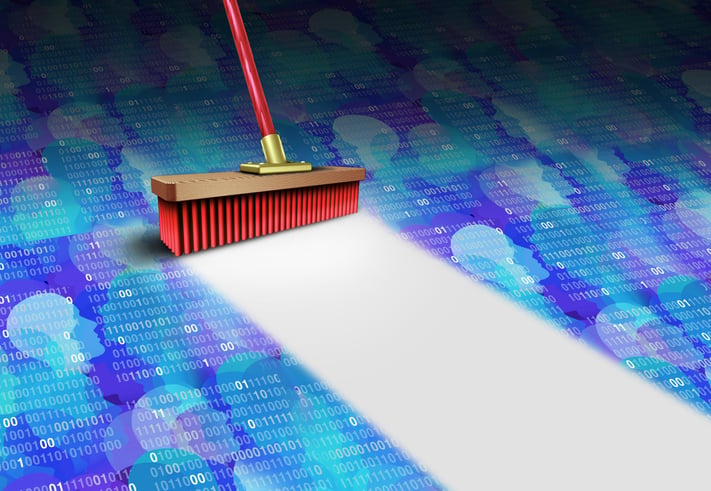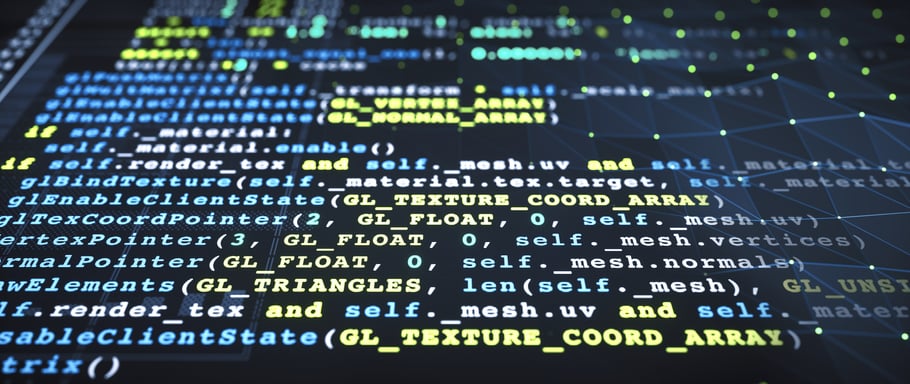4 min read
Mastering Data Cleansing: A Step-by-Step Guide
Unlock the power of data cleansing with this comprehensive guide that takes you through the step-by-step process and best practices to optimize your...
4 min read
![]() The Amazing Team at Skills Data Analytics
:
Apr 16, 2024 10:02:05 AM
The Amazing Team at Skills Data Analytics
:
Apr 16, 2024 10:02:05 AM
There’s something profoundly refreshing about clearing out the old to make way for the new, whether it’s spring cleaning your apartment or decluttering your digital workspace. In the world of programming, especially when you're neck-deep in data analytics, this often translates to the need for deleting files. It might seem simple at first glance, but doing it efficiently and safely in Python is an art form. Today, we dive into the nitty-gritty of deleting files in Python, ensuring your digital workspace remains as tidy and organized as your physical one. Let’s embark on this journey together, shall we?
Before we wield our digital brooms and start sweeping away files, it’s essential to understand what we’re dealing with. In Python, files particularly those containing binary data are more than just names on a screen. They’re containers of binary formats, intricate structures of bytes that hold our precious data. From simple text files to complex data serialization formats, understanding read/write operations and binary I/O is key to mastering file manipulation. It’s this foundation that not only allows us to create and modify data but also to know how to effectively remove it when the time comes.
Quick Tips:
Now, for the main act: deleting files. Python’s os module is our magic wand here, equipped with all sorts of spells—er, commands—for file system operations. But with great power comes great responsibility. Deleting a file is irreversible, so ensuring it’s the correct file and that it’s no longer needed is paramount.
os.remove() or os.unlink() to delete a single file—they’re essentially the same spell.shutil.rmtree() is your go-to. Just be absolutely sure you want to erase it all.Through the lens of a real-life example, consider how tech giants manage vast amounts of data. They routinely perform cleanup operations to keep their systems efficient, using scripts and protocols much like the ones we’re discussing.
Best Practices:
File deletion is just one aspect of managing a digital workspace. Regularly auditing your files, organizing them into directories, and deleting unnecessary data are all part of a broader file system maintenance strategy. These practices not only keep your workspace clutter-free but also enhance performance and security key components in fields like data analytics, where efficiency and confidentiality are paramount.
Maintenance Tips:
Deleting files in Python, while seemingly straightforward, requires careful consideration and best practices to ensure data safety and system efficiency. Today, we’ve covered essential techniques and tips, from understanding binary data to implementing safe file removal methods. Here are your key takeaways:
By adopting these practices and techniques, you're well on your way to becoming proficient in managing files and data, a skill that's increasingly invaluable in our digital age. As you apply these practices, remember that they are not just about keeping your digital space tidy; they are crucial skills that can enhance your projects and workflows, particularly in data analytics.
Now, go forth and declutter with confidence!
Also Read: Efficient File Handling in Python: Open and Read Techniques
For further exploration of data analysis and analytics, check out our bootcamp program on Data Analytics.
How do I safely delete a file in Python?
Before wielding the delete command in Python, it's crucial to double-check the file or directory's path and existence. Utilize the os.path.exists() function to ensure that you are targeting the correct file or folder for deletion. This simple step adds an extra layer of safety and prevents accidental removal of important data. By verifying the path and existence beforehand, you can proceed confidently with using os.remove() or shutil.rmtree() to delete files or directories, knowing that you're taking the necessary precautions to safeguard your data.Can Python delete files that are open or in use?
In the world of programming, Python behaves like a strict but caring guardian when it comes to deleting files that are open or in use. If you attempt to delete a file that is currently being accessed by another process, Python will not shy away from raising an error to protect your data integrity. It's like a digital safety net, ensuring that important files are not accidentally tampered with. Therefore, before waving your deletion wand, make sure to close any open files and ensure they are not being actively used by any other program. By following this precaution, you can navigate the file deletion process smoothly and safely, without risking the loss of crucial data. Remember, in the realm of Python file manipulation, a little caution goes a long way towards maintaining a secure and organized digital workspace.What is data serialization, and why is it important for file manipulation?
Data serialization is the process of converting data structures into a format that can be easily saved to a file or transmitted. It’s crucial for efficiently storing and exchanging complex data.How can I ensure I don’t accidentally delete important files?
In addition to implementing checks in your script to confirm file paths and names, it's crucial to take further precautions when deleting files in Python. Consider adding a confirmation step or a dry run feature that allows you to review the files that will be deleted before proceeding with the deletion process. This extra layer of verification can help prevent the accidental deletion of important files and provide you with peace of mind knowing that you're only removing the files you intend to. By incorporating these measures into your file deletion procedures, you can ensure a safe and organized approach to managing your digital workspace.Are there any Python libraries that help with complex file system operations?
Beyond the standardos and shutil modules, libraries like pathlib offer a higher-level, object-oriented interface for file system operations, making tasks more intuitive.

4 min read
Unlock the power of data cleansing with this comprehensive guide that takes you through the step-by-step process and best practices to optimize your...

3 min read
In today’s digital age, the cloud has become the cornerstone of data storage and management for businesses worldwide. But with great power comes...

3 min read
Ah, the world of programming, where the thrill of creating something from nothing never gets old. For many of us, the journey into this world begins...